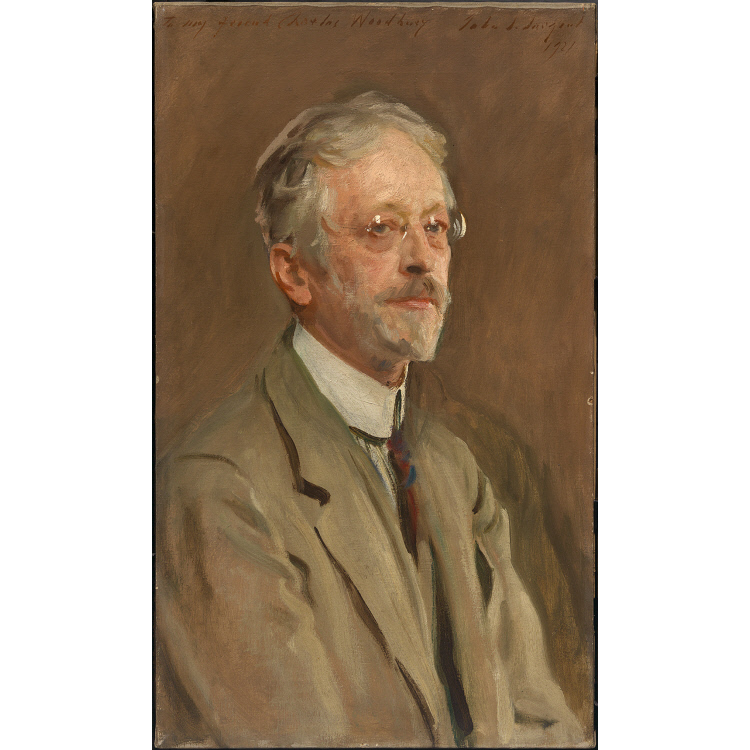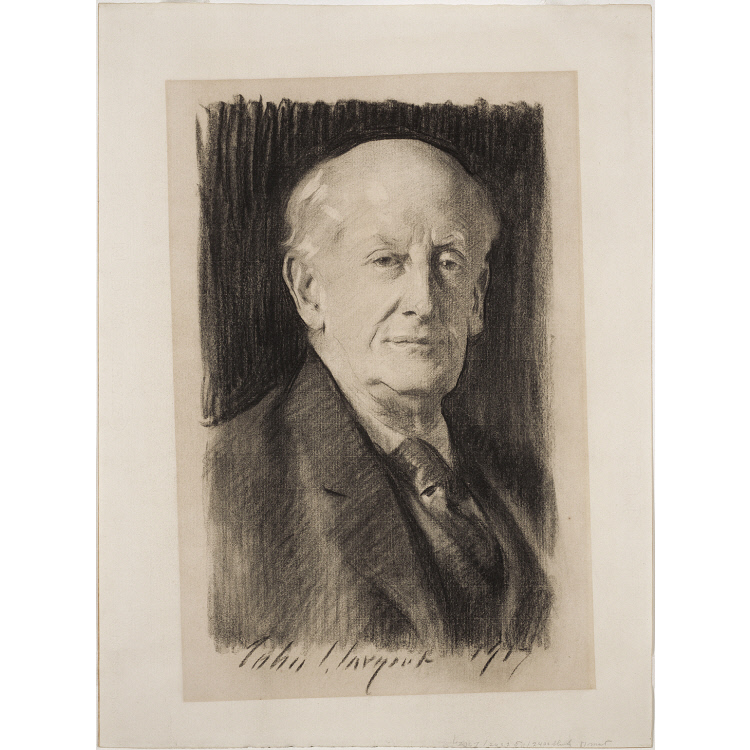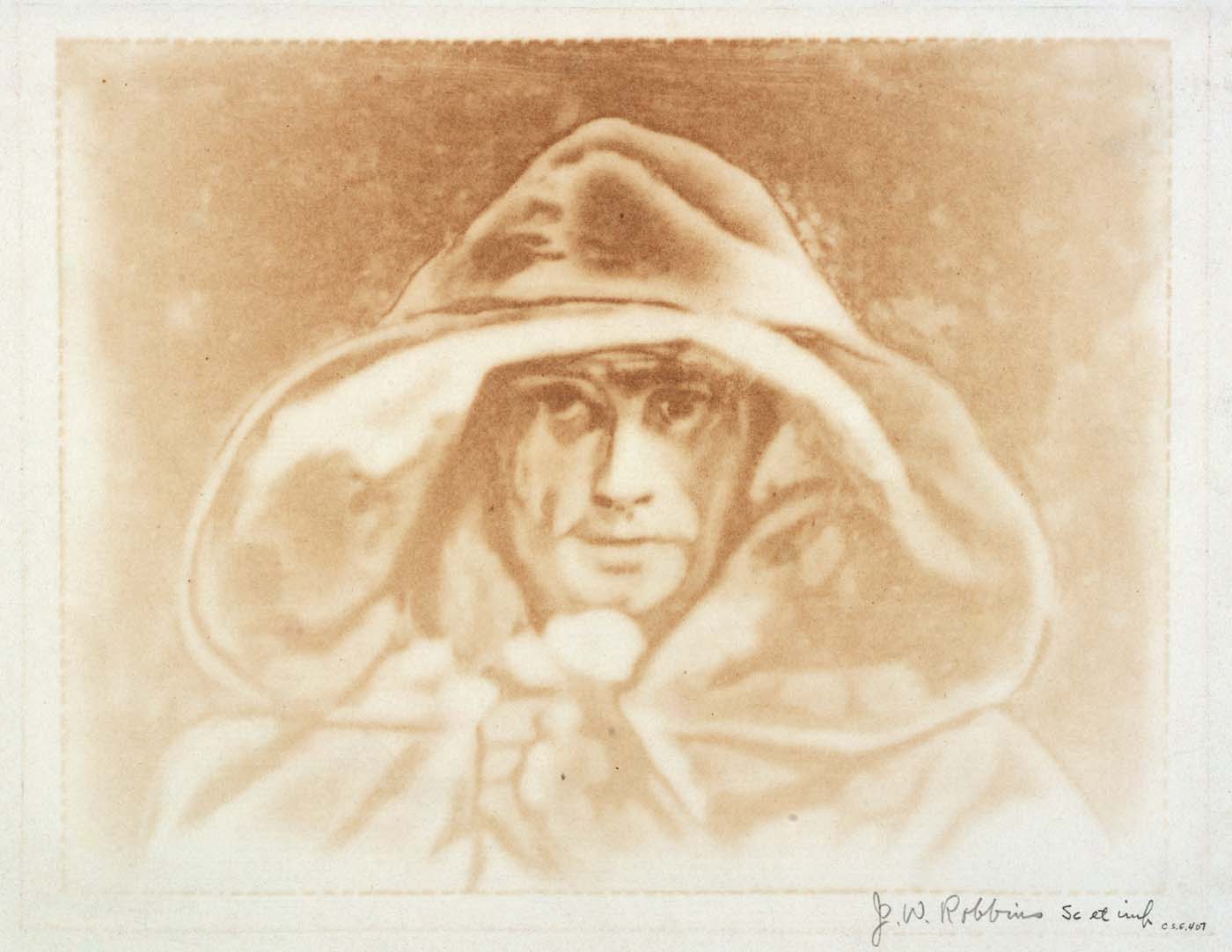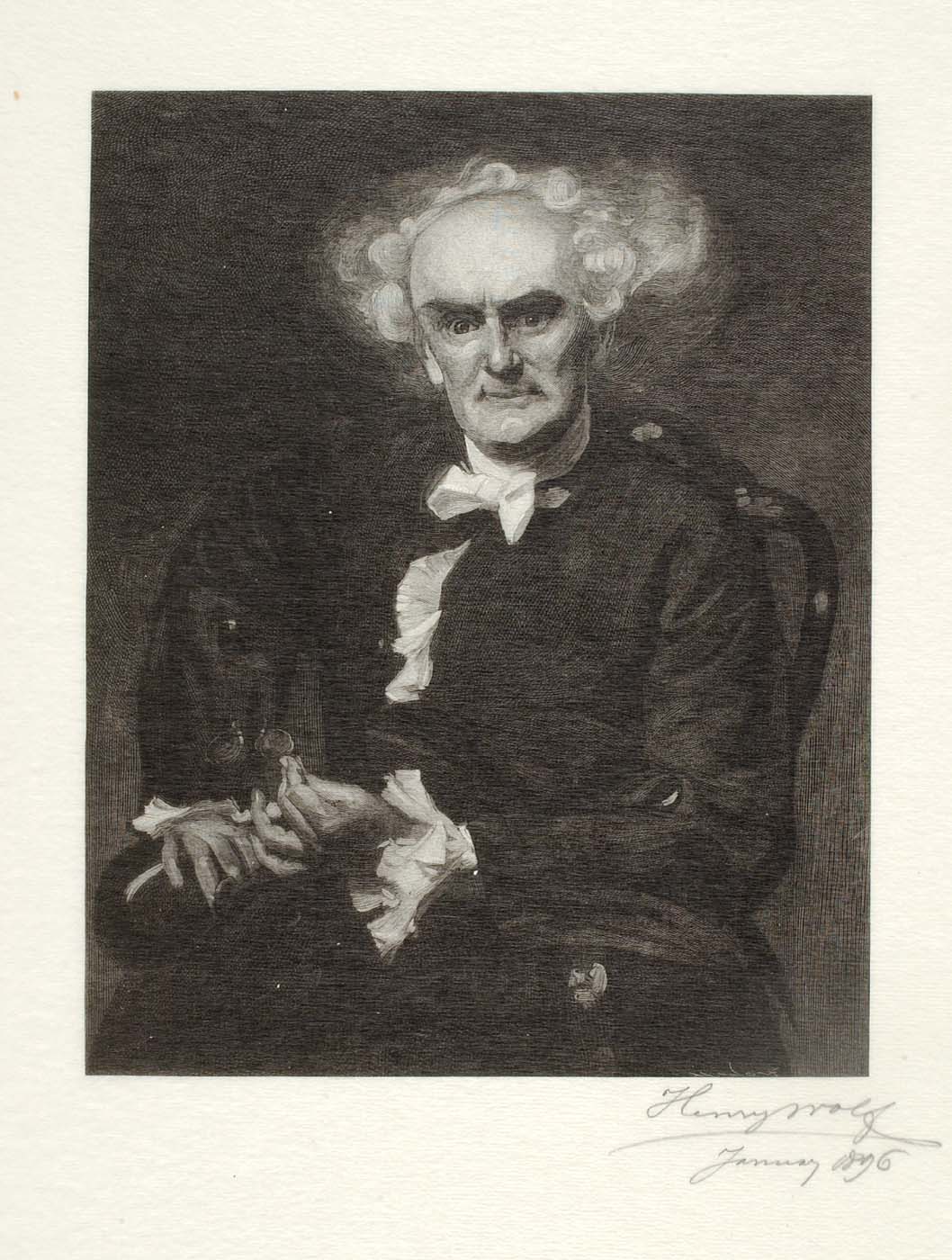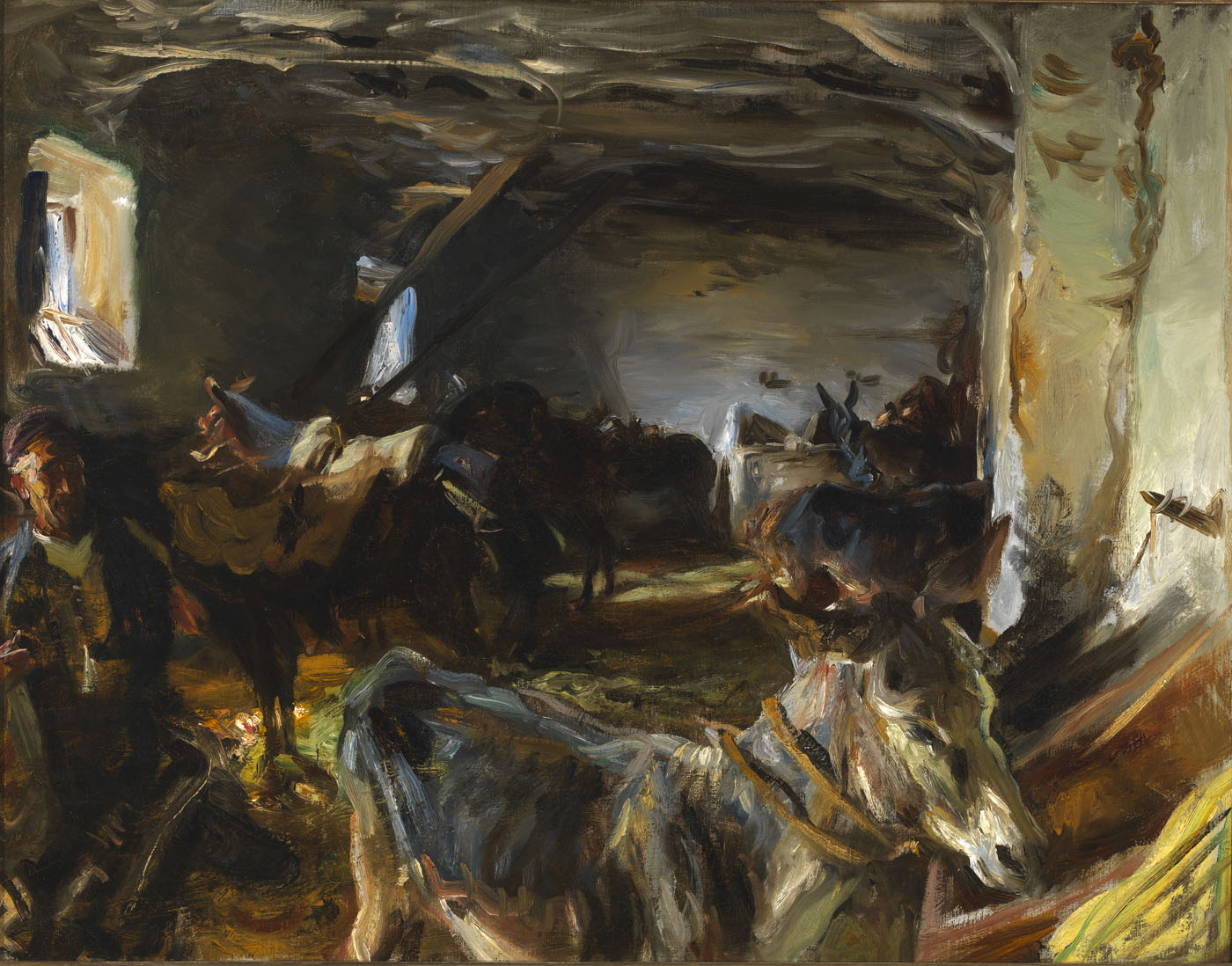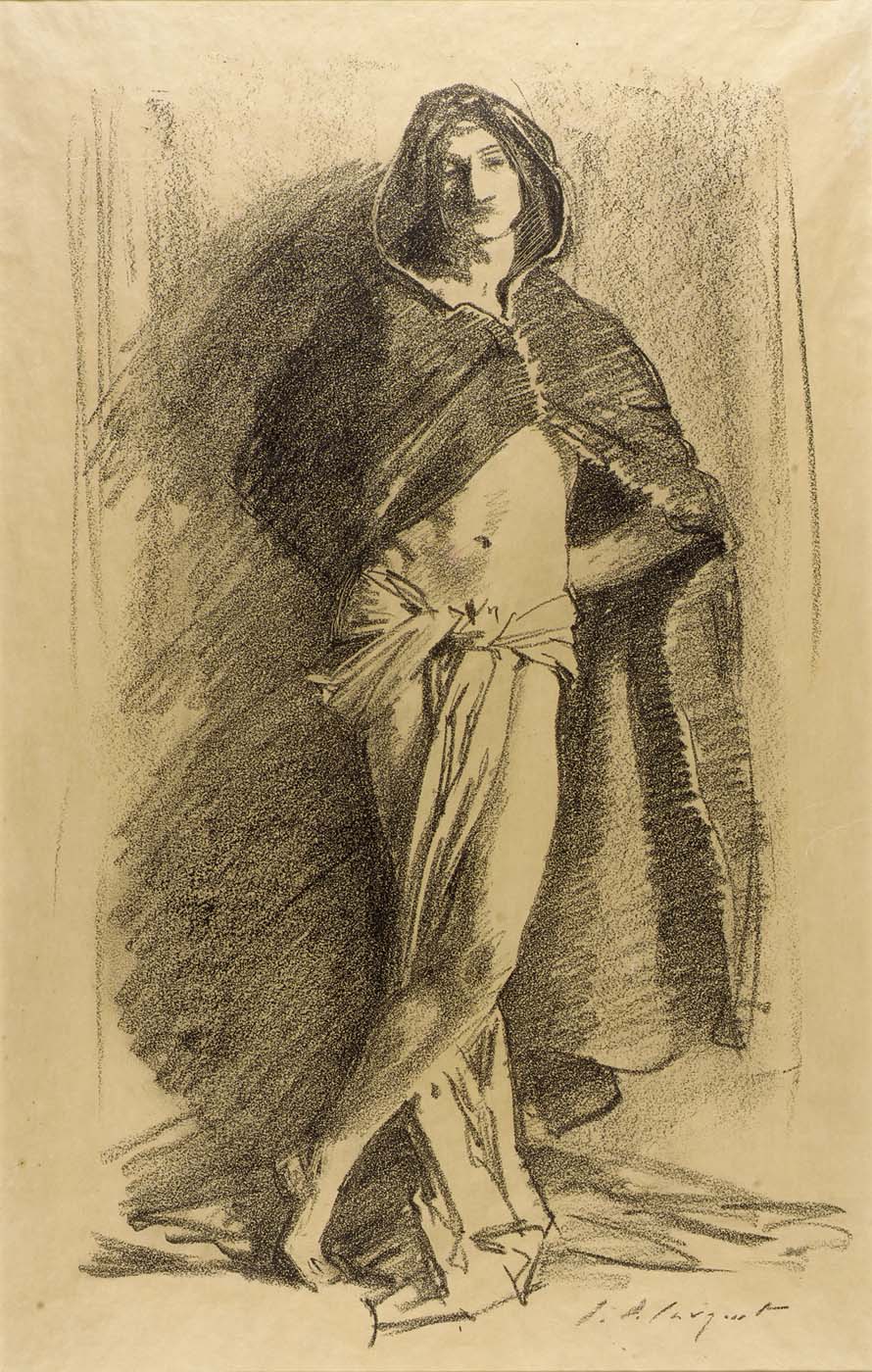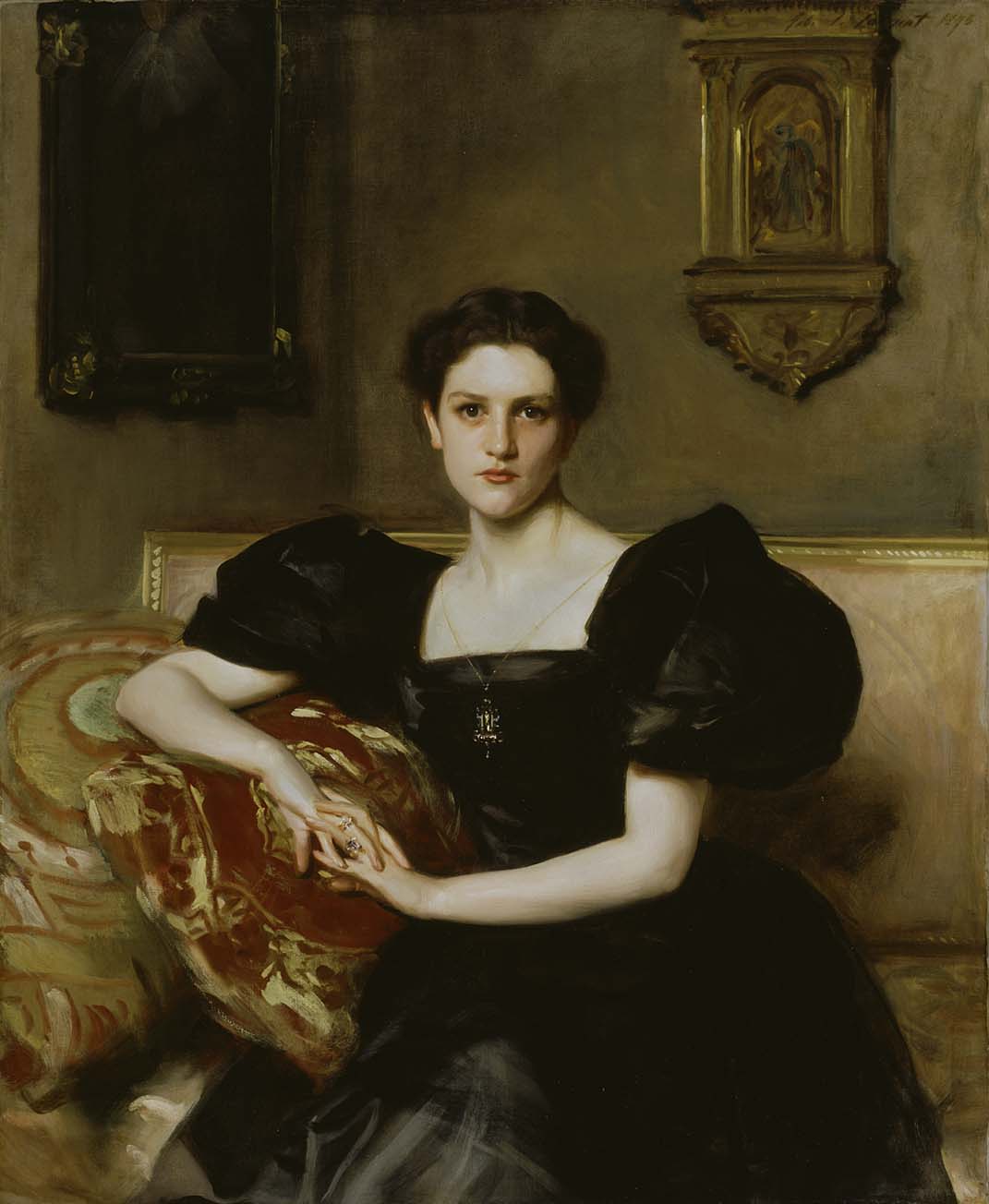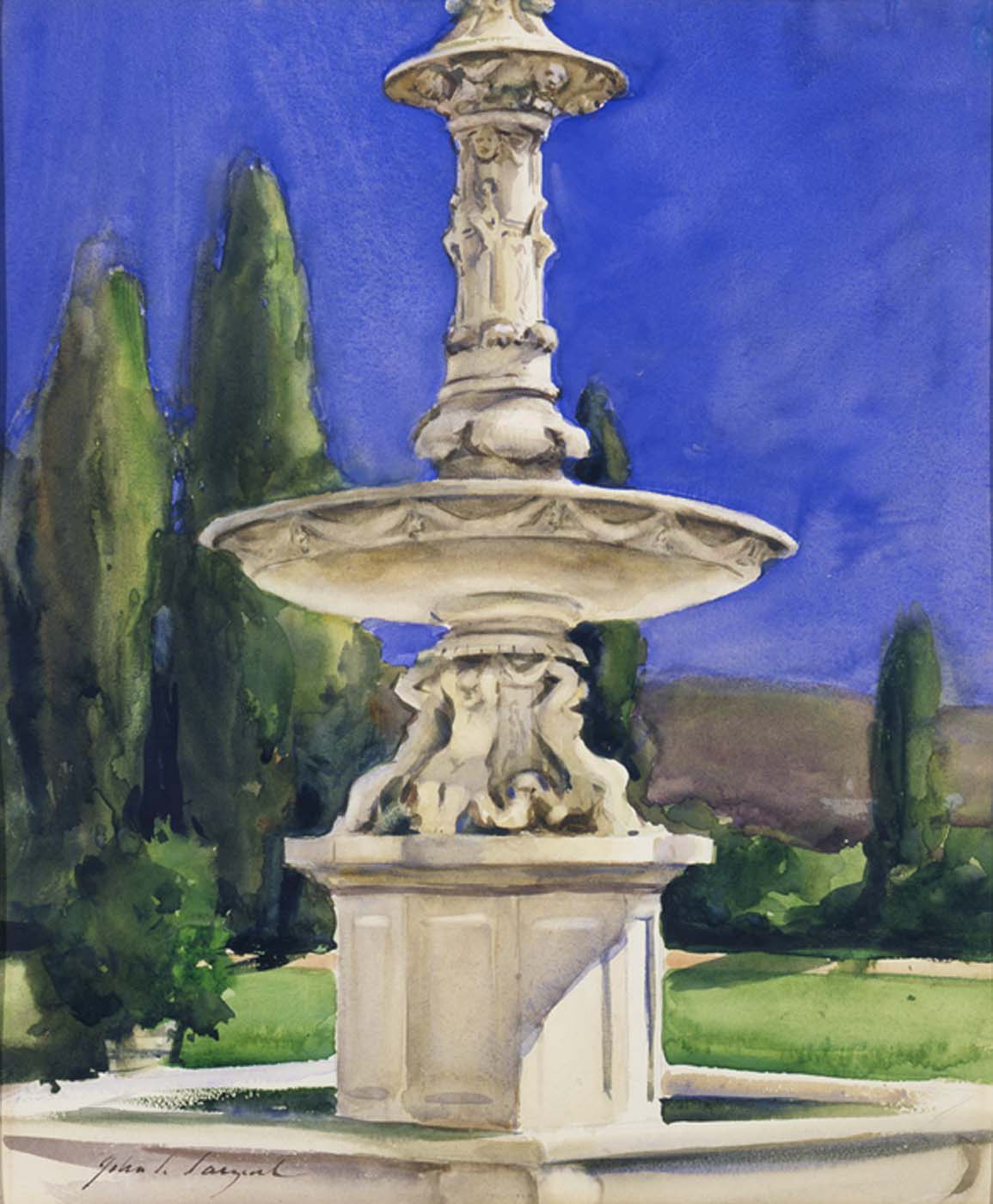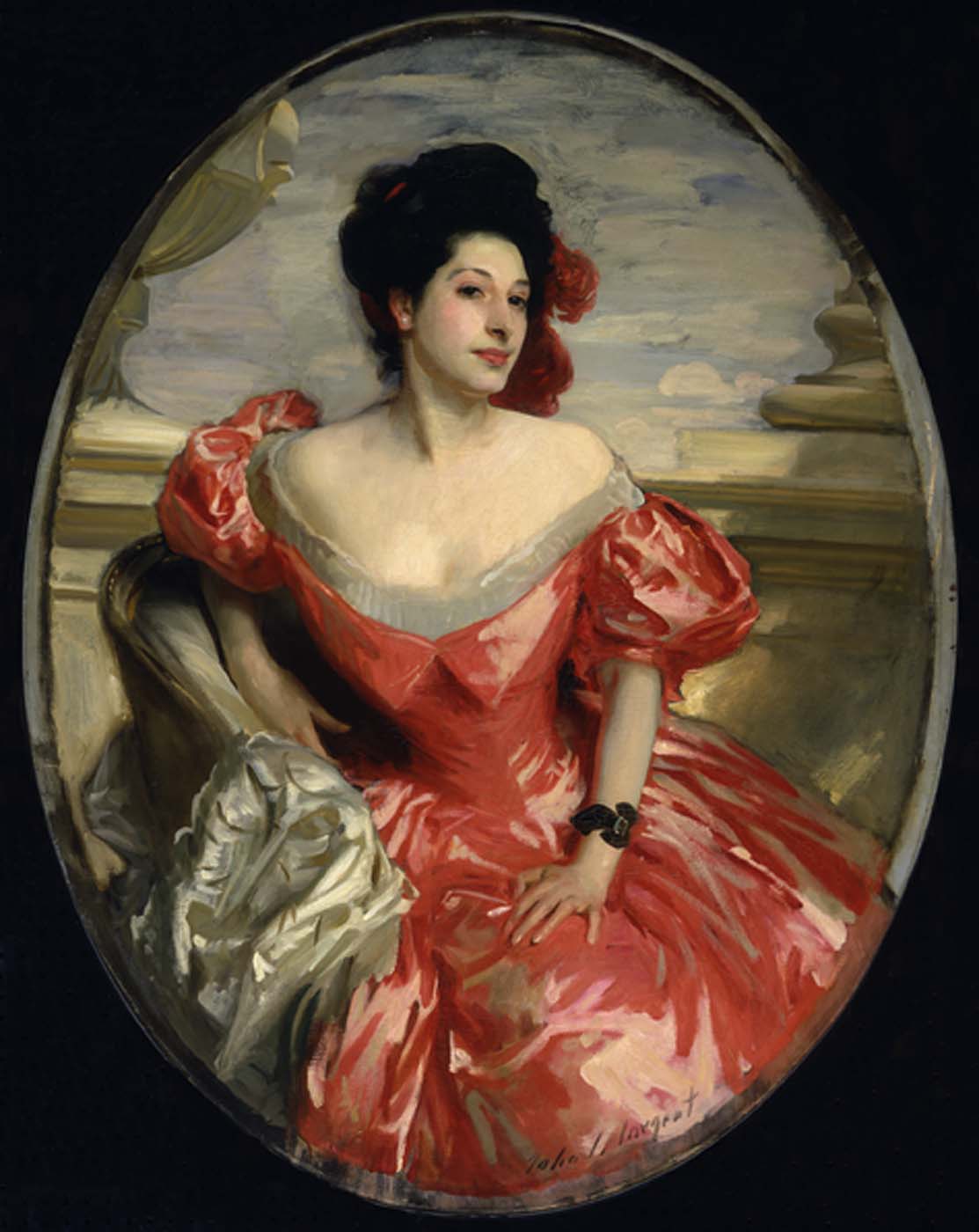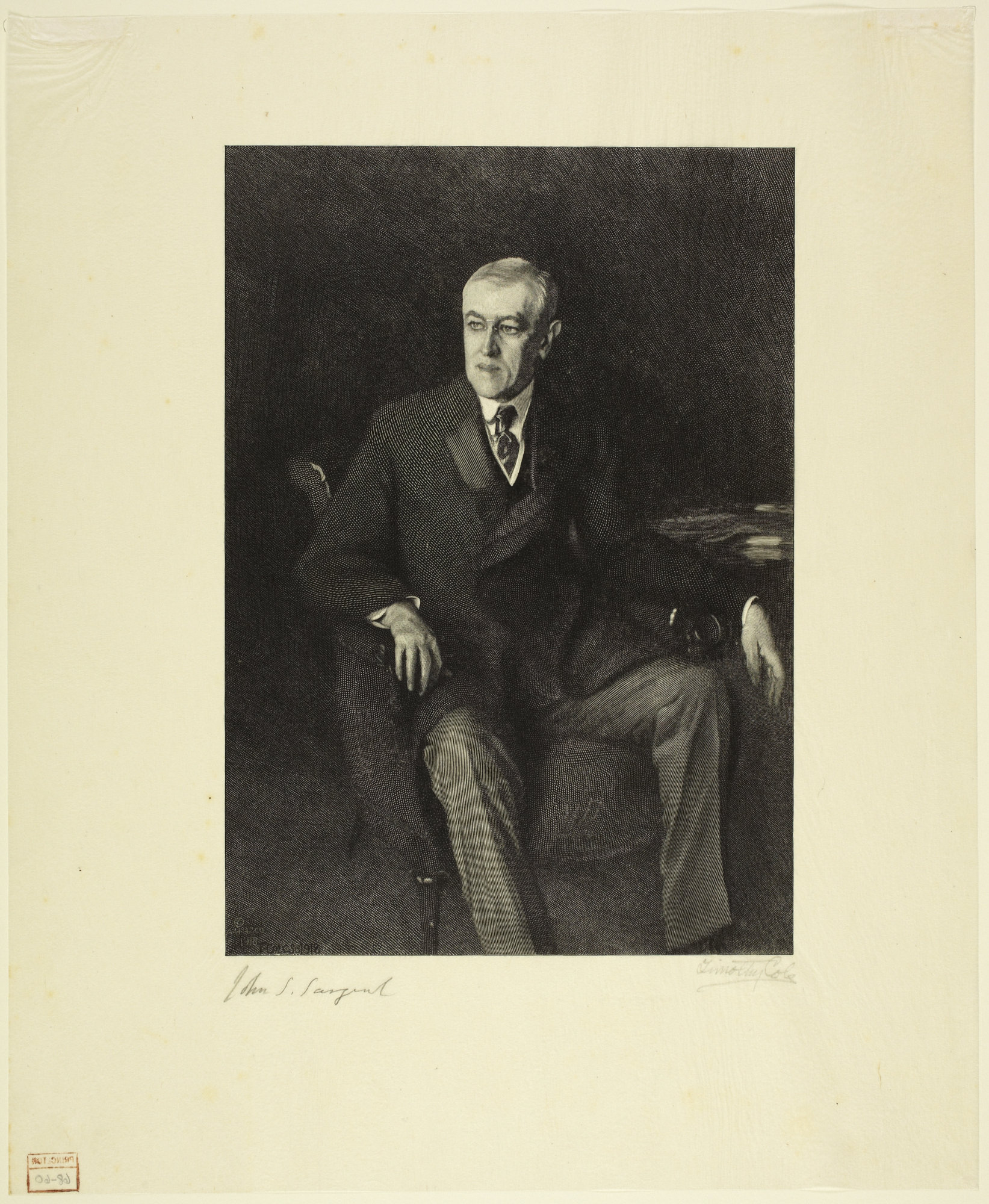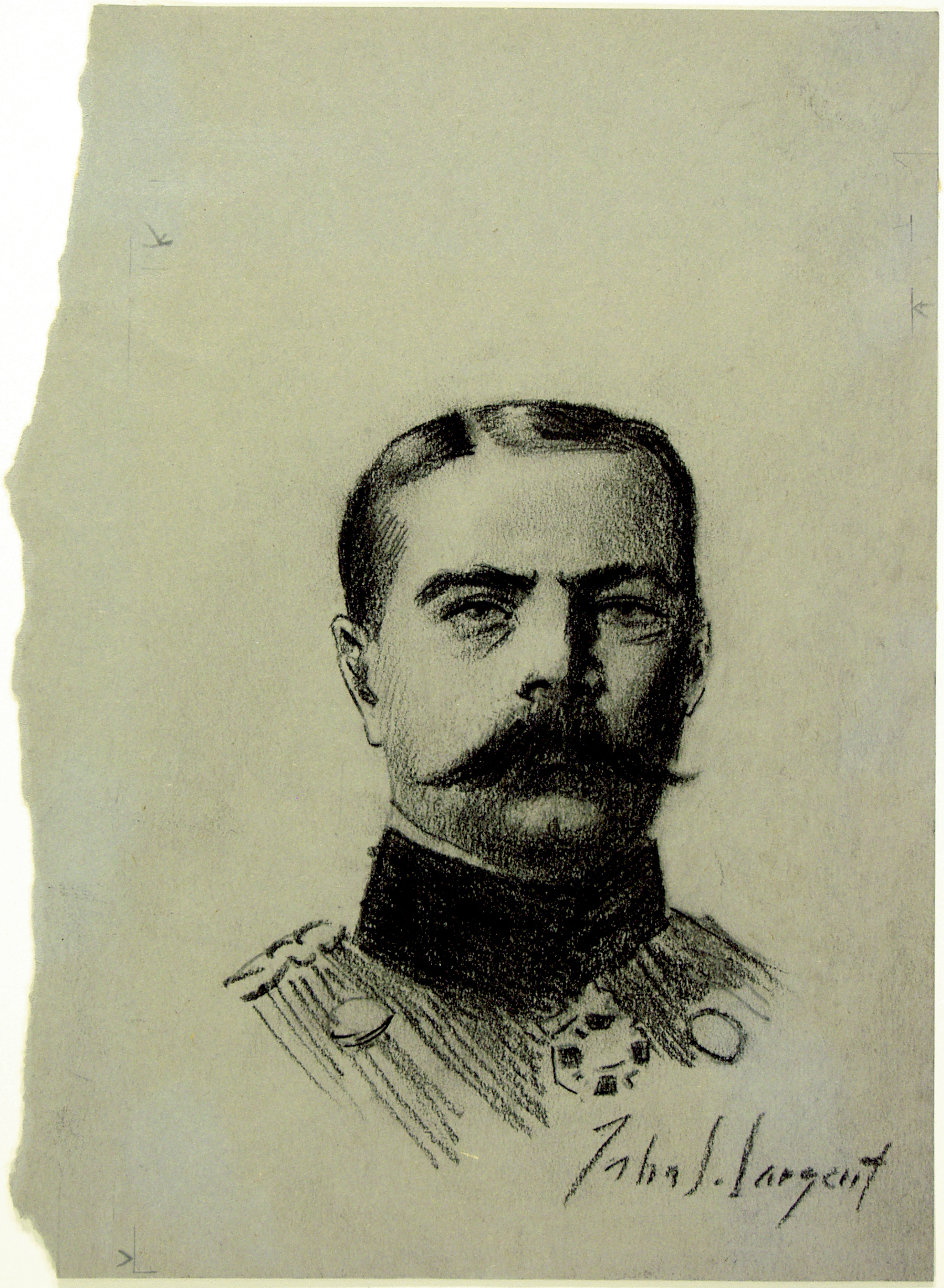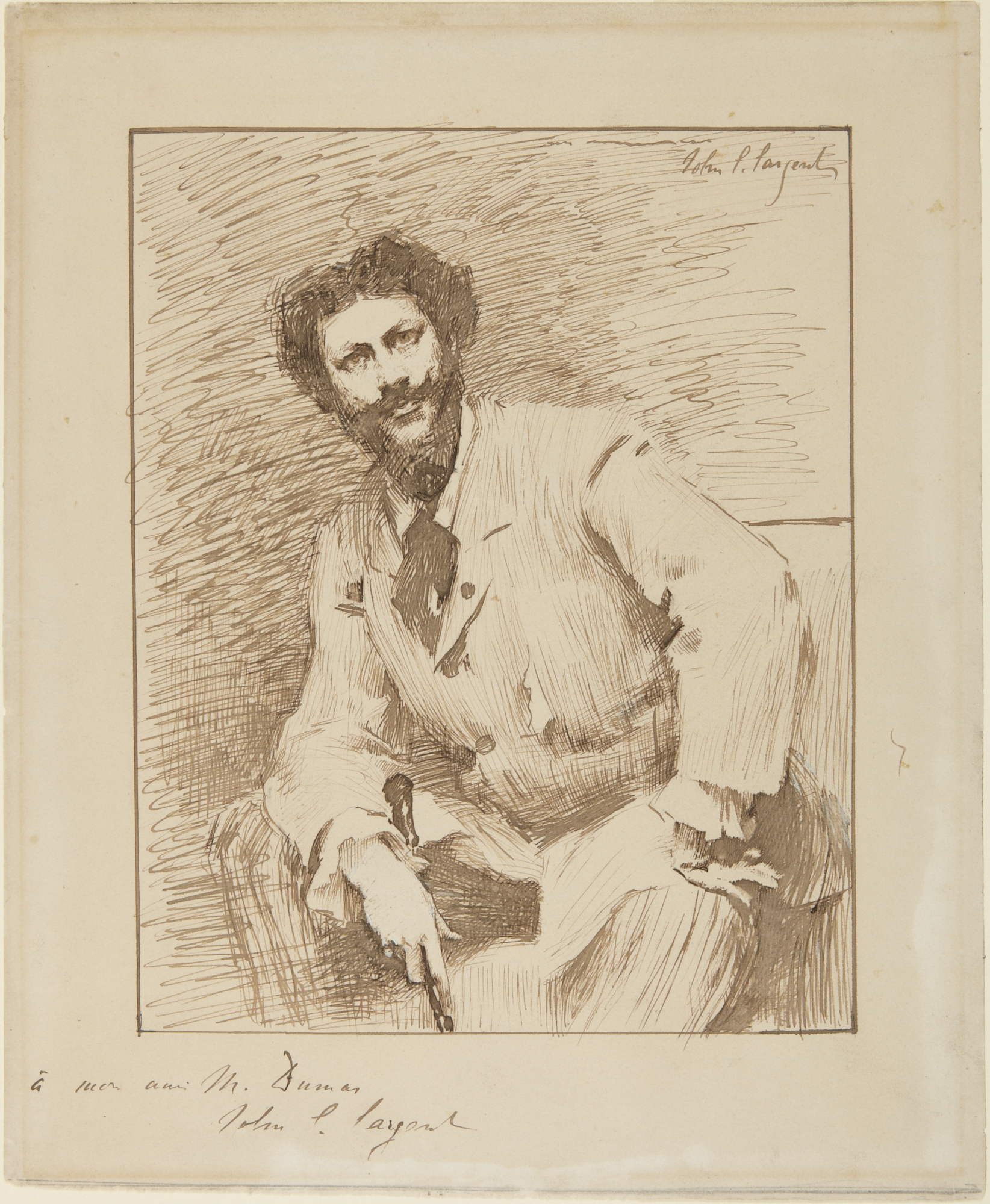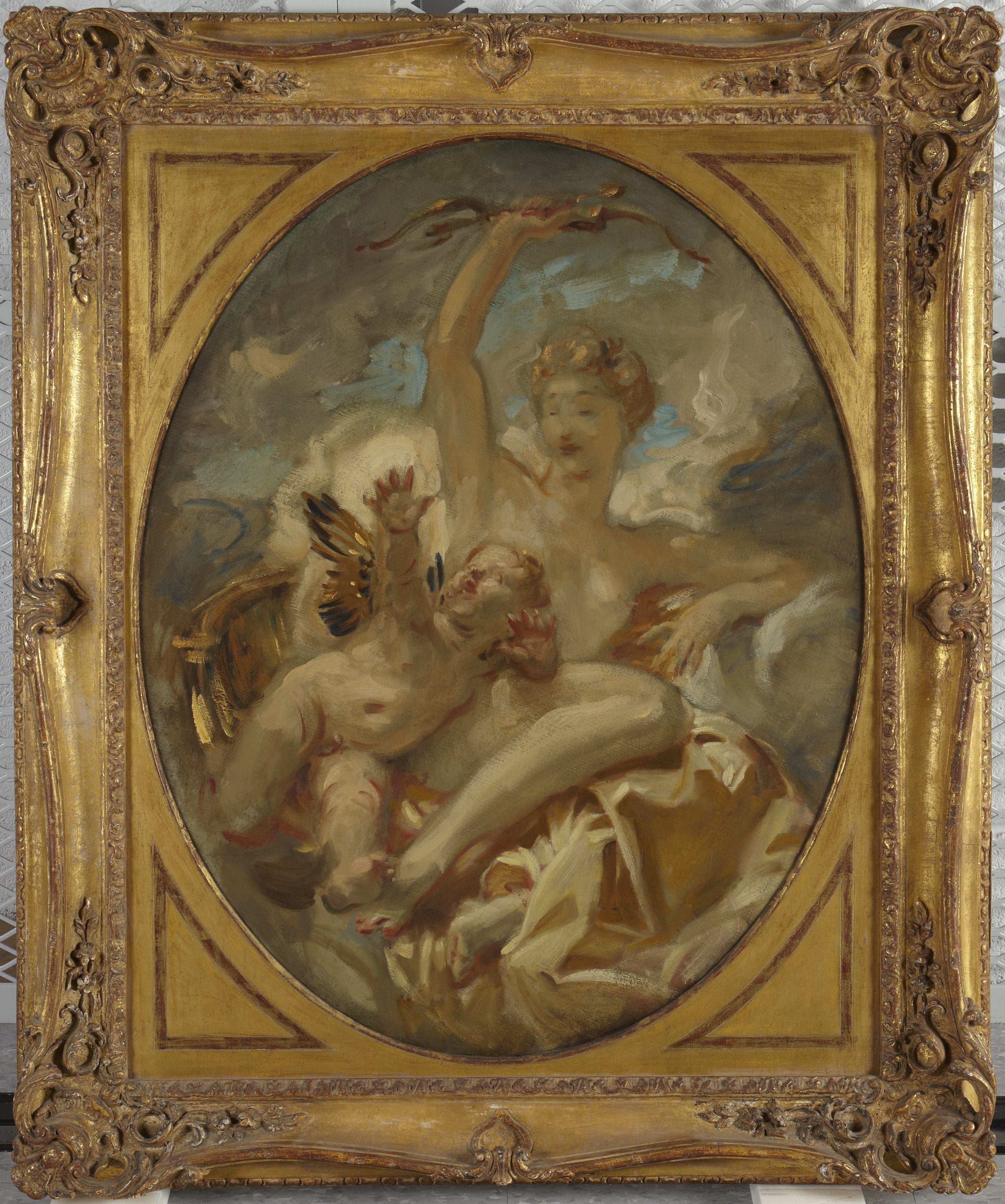John Singer Sargent
Sargent, born in Italy to American parents and educated in Germany and France, possessed a keen eye for regional social conventions. As the premier society portrait painter of his day, Sargent instinctively knew what pose, attire, and mood to suggest in London, New York, or Boston. His English subjects have an air of pomp and splendor, New Yorkers have a cosmopolitan appearance, and Boston subjects often look a bit more serious, as if ancestral responsibilities rested on their shoulders.
Sargent's understanding of old New England imagery may well have been learned over time; his father, the surgeon Fitz William Sargent, descended from a prominent Gloucester, Massachusetts, family. The Sargents relocated to Europe in 1854 and raised their children as peripatetic members of an international elite. John Singer attended schools in Florence and Dresden before entering the atelier of Carolus-Duran and the École des Beaux Arts in 1874. Academic training equipped Sargent with narrative conventions that he adjusted for class and local color in his portraits, yet his lively brushwork was up-to-date, even forward-looking. This unique style secured several commissions for Sargent on his first visit to Boston in 1887. By 1890 his reputation was such that the trustees of the Boston Public Library selected the painter to decorate the interior of the institution's new McKim, Mead, and White building in Copley Square.
William H. Truettner and Roger B. Stein, editors, with contributions by Dona Brown, Thomas Andrew Denenberg, Judith K. Maxwell, Stephen Nissenbaum, Bruce Robertson, Roger B. Stein, and William H. Truettner Picturing Old New England: Image and Memory (Washington, D.C.; New Haven, Conn; and London: National Museum of American Art with Yale University Press, 1999
Objects at Yale Center for British Art (1)
Objects at The Walters Art Museum (1)
Objects at Dallas Museum of Art (2)
Objects at Gilcrease Museum (2)
Objects at Archives of American Art (3)
















